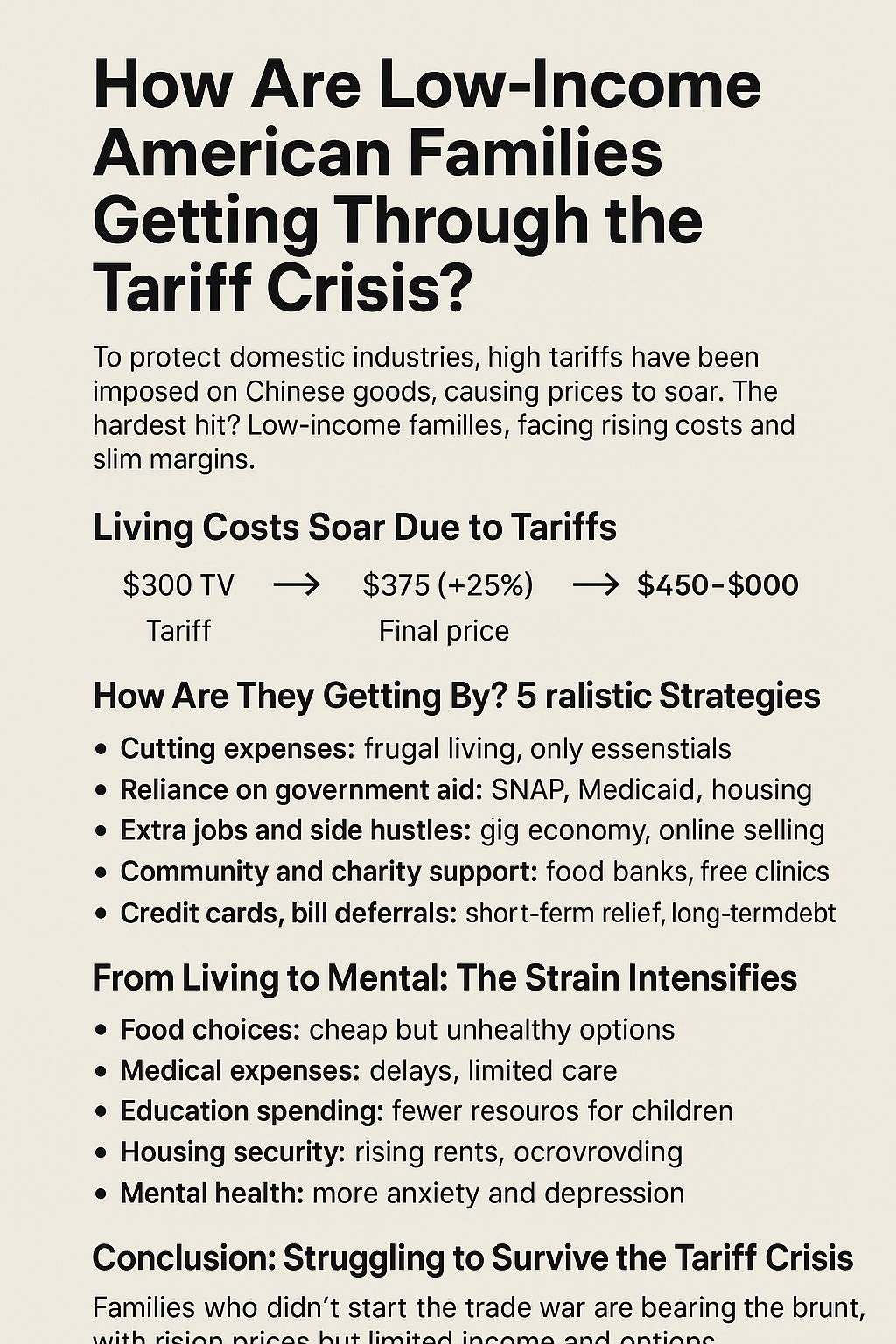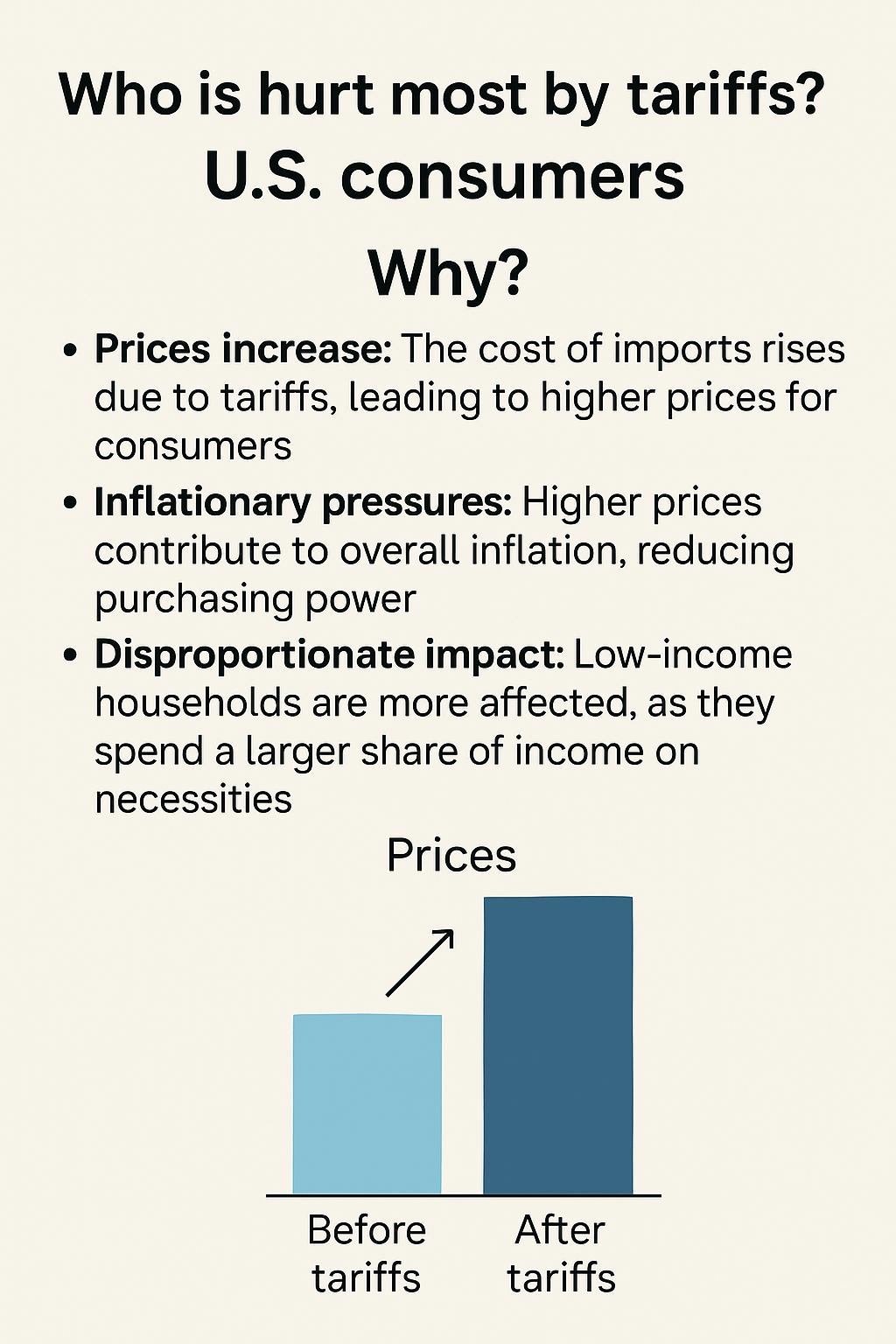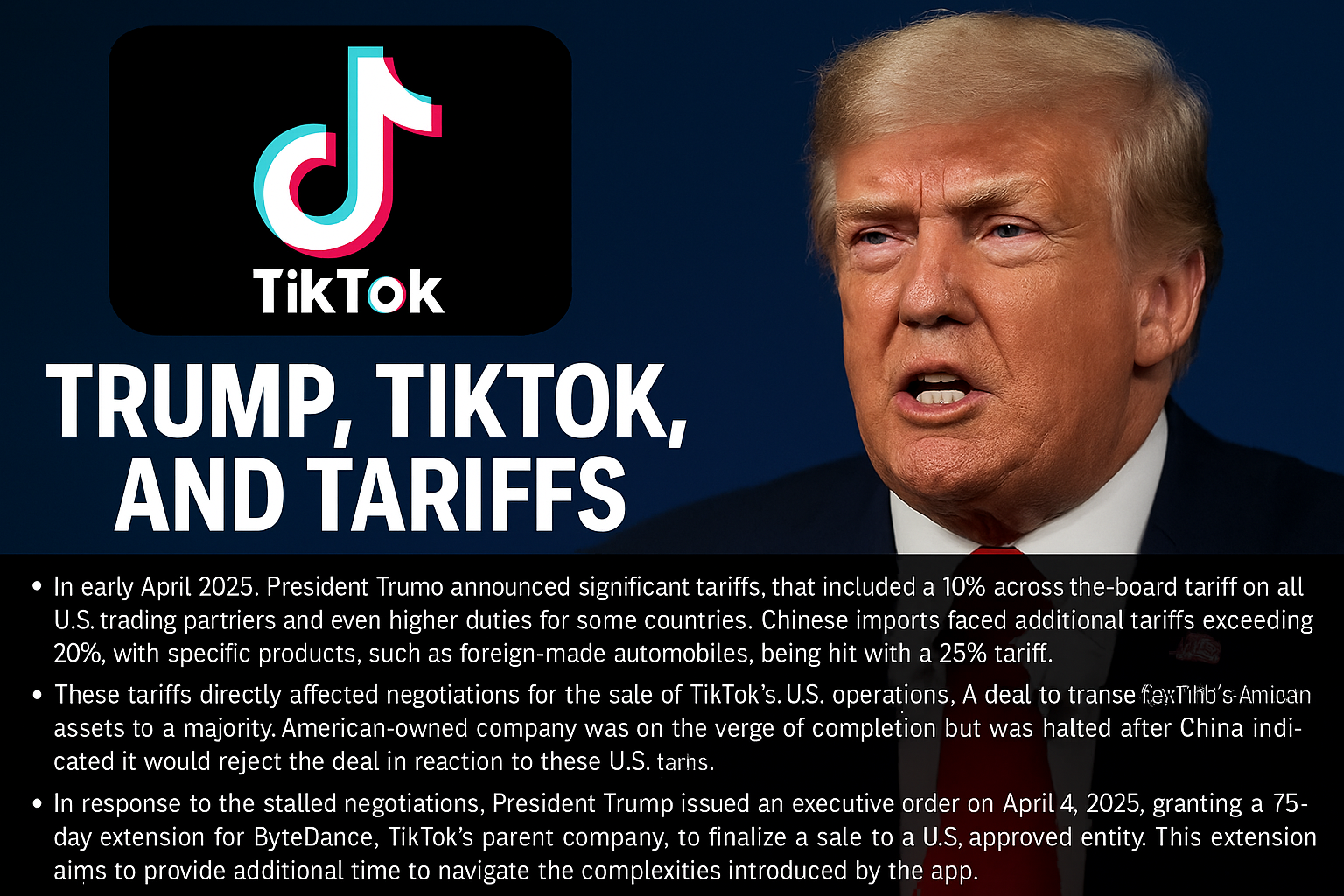🇺🇸 How Low-Income Families in the U.S. Survive the Tariff Crisis: An Invisible Battle
In recent years, the U.S. has imposed heavy tariffs on goods from countries like China under the banner of “protecting domestic industries.” However, while these measures are presented as external economic strategies, the real burden often falls on everyday American consumers—especially low-income families.
How do these families cope as prices surge and living costs escalate? What does this tariff crisis truly mean for the most vulnerable Americans? Let’s take a closer look.
💸 1. Tariffs Push Prices Up, Raising Living Costs
Tariffs are essentially import taxes. Once imposed, the added costs are passed on by importers and retailers directly to consumers.
📦 For example:
- A Chinese-made TV originally priced at $300
- After a 25% tariff, the cost becomes $375
- With markup, the final retail price could reach $450–$500
⚠️ These aren’t luxury items—they’re everyday essentials.
For low-income households, even a few extra dollars can strain the monthly budget.
🛠️ 2. How Low-Income Families Cope: 5 Survival Strategies
1️⃣ Cutting Back to Bare Necessities
To manage the price hikes, families:
- Cook at home, buy in bulk, and use coupons
- Cancel streaming and entertainment subscriptions
- Delay purchases of new clothes or electronics
🗣️ A factory worker shared: “I used to afford low-cost Chinese appliances. Now I can’t even look at them.”
2️⃣ Relying on Government Assistance
Low-income families depend heavily on U.S. social programs:
| Program | Support Offered |
|---|---|
| SNAP (food stamps) | Helps cover basic grocery needs |
| Medicaid | Reduces medical expenses |
| Section 8 Housing Aid | Provides rent subsidies to prevent eviction |
| EITC & Child Tax Credit | Tax refunds and cash supplements |
📌 Expanded during COVID, many of these benefits have now reverted to pre-pandemic levels.
3️⃣ Juggling Multiple Jobs or Side Hustles
When a single paycheck isn’t enough, many:
- Work two or more jobs (e.g., retail + warehouse)
- Drive Uber, deliver food, or take gig jobs
- Sell used goods online, make crafts, or freelance
📊 Pew Research shows that over 40% of low-income adults pursued side gigs in 2023.
4️⃣ Community & Charity Support
When government aid falls short, churches and nonprofits fill the gaps:
- Food banks and clothing drives
- Free clinics and daycare services
- Mental health support and crisis intervention
These grassroots supports act as the last line of defense in many struggling communities.
5️⃣ Credit Card Debt & Deferred Payments
With no better options, some families:
- Rely on high-interest credit cards (over 20%)
- Request bill deferrals or pay minimum balances
- Negotiate delayed rent with landlords or share housing
⚠️ This “borrow from tomorrow to survive today” approach leads to long-term financial damage.
📉 3. The Broader Impact: More Than Just Money
| Impact Area | Real-Life Effects |
|---|---|
| Food Choices | Cheap, unhealthy options replace fresh, healthy foods |
| Healthcare | Postponed visits or emergency-only care |
| Education | Cutbacks on tutoring or college application expenses |
| Housing | Moving to unsafe areas or doubling up with relatives |
| Mental Health | Anxiety, depression, and rising stress levels |
It’s not just material poverty, but also a poverty of opportunity and hope.
🧩 4. Who Pays the Price for the Tariff Crisis?
While tariffs are framed as “penalties on foreign nations,” the reality is:
- Consumers pay the difference through higher prices
- Workers lose jobs when industries face retaliation or rising costs
- The middle class shrinks, wages stagnate
- Low-income families suffer the most, with the fewest alternatives
📢 “Tariffs act like reverse subsidies—helping a few, while taxing the many.”
✊ Conclusion: A Quiet Struggle with No Headlines
Low-income families didn’t start the trade war—but they’re paying for it. As prices rise and assistance wanes, they rely on thrift, resilience, and each other to make it through.
Their reality is often invisible to policymakers, but their daily struggle is real—and relentless.
A responsible society should never place the full cost of its economic strategies on the shoulders of its most vulnerable.
Their perseverance is a silent protest, their survival an act of resistance. And their stories remind us of the true cost of policy decisions made from the top.




